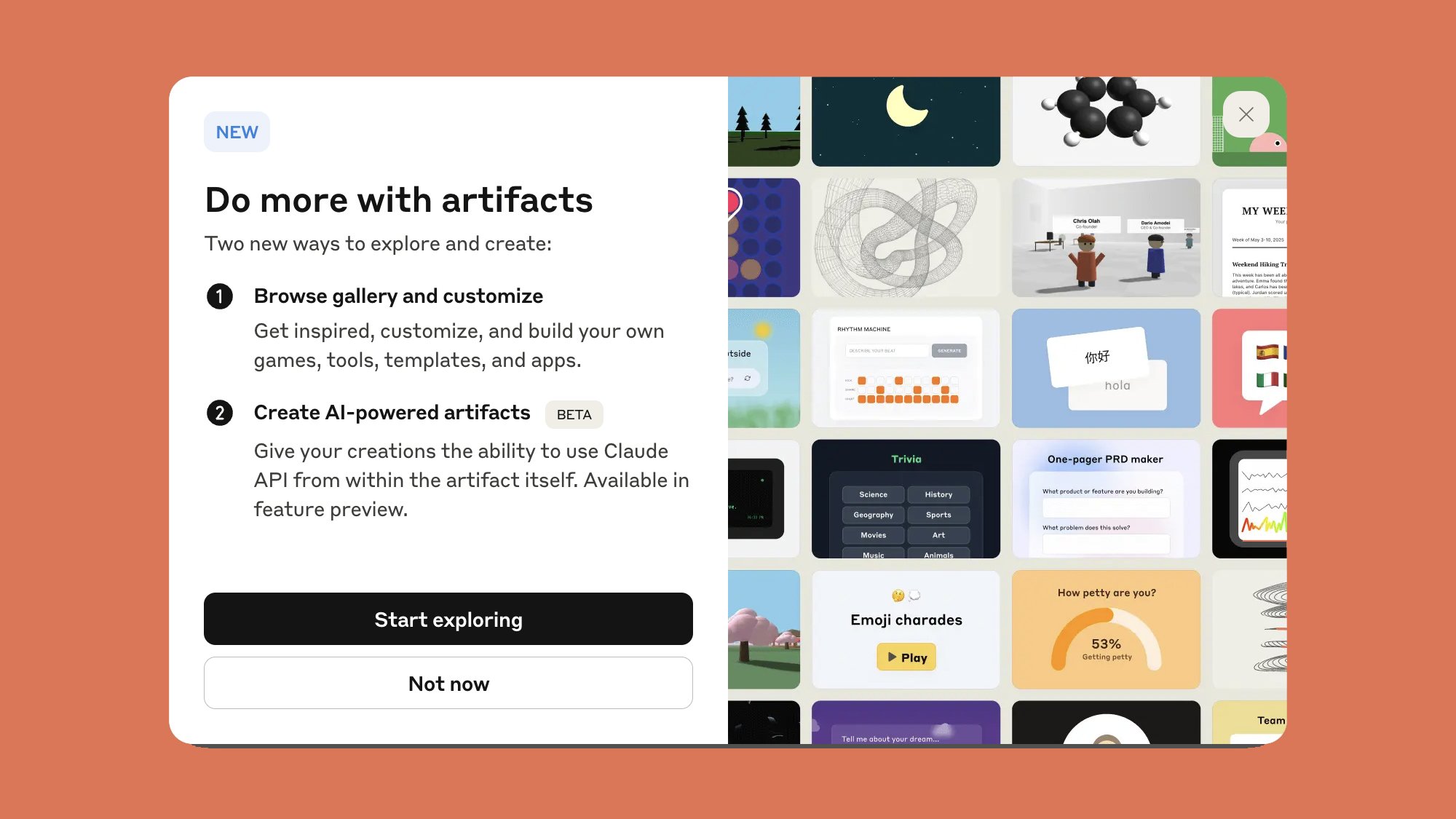Last year, Anthropic rolled out a new feature called Artifacts in its Claude AI chatbot, letting users see real-time results from their conversations—think diagrams, reports, websites, or code snippets, for example. Now the feature has been given a substantial upgrade, letting you create and share AI-powered apps just by describing them.
The apps you create through this “vibe coding” approach can have Claude AI smarts built right inside, and it’s available for all users—so you can give it a try whether you’re on a paid subscription or not. And if you share your creation with other people, when they run the app it’ll be counted against their Claude usage allowance, not yours.
One of the examples Anthropic gives is a flashcard app. You could previously get Claude to code you an app showing flashcards, but you’d need to specify all the details and card content yourself. Now, you can leverage Claude’s AI to create card content specific to individual users, because they’ll be able to give the chatbot prompts about the text they want to see.
The upgraded feature should be available to everyone now, though you may need to enable it: On the web, click your account name (bottom left), then choose Settings > Profile and enable Create AI-powered artifacts. You’ll see some examples of apps other people have made, and you can test out any of these in your browser, as well as making changes to them via the Customize button.
Back on the main Artifacts screen, you can see any projects you’ve previously made, and click New artifact to start creating something new. You’ll be given some categories to choose from, including Games, Productivity tools, and Creative projects—but if nothing fits exactly, click Start from scratch.
Creating my own app
I haven’t done a whole lot of coding since I learnt BASIC back in high school: I used it to code a soccer simulator that picked scores and scorers at random, which was a lot of fun at the time. With Claude’s new and improved Artifacts tool available, I was interested to see just how good an app I could make from vibes alone.
My first thought was to ask Claude what I should create, a worrying reminder that AI is taking away our capacity to think and make decisions ourselves. In the end I used my own brain cells to make a choice: I wanted to make an app to generate quiz questions on any specified topic, with a sliding scale of difficulty and the answers available if needed.
I explained what I wanted using natural language and zero code: an app that would prompt the user for a topic, then display a question on that topic, with the option to reveal the answer with a click. I also wanted options for adjusting the question difficulty, and switching topics. It actually only took a single prompt to describe everything.
Credit: Lifehacker
Claude gave me an overview of what it would do before it started building, telling me it loved the vision for my app (I bet it says that to everyone). When I gave the go-ahead, the browser window split to show the app and its raw code on the right (you can toggle between these views with a click).
The resulting app was pretty great the first time around, certainly in terms of its functionality—everything worked as I wanted and was well designed. The AI’s choice of questions and assessment of their difficulty was a little wonky, however: All the questions had the right answers attached, but the app tended to fixate on a limited set of subjects within each topic (specific movies, actors, or bands, for example).
It was probably unfair for me to ask for a question about Twin Peaks at child-level difficulty, but “where is Twin Peaks set?” is maybe a little too easy—and Claude generated the same question at the next difficulty level, too. The hardest question was about the model of tape recorder FBI agent Dale Cooper uses, which had me stumped.
Credit: Lifehacker
That’s more about the limitations of AI models and their understanding, though. In terms of the actual app building, Claude mostly impressed: It responded to my questions and edits very well, letting me change colors and layouts with simple text prompts. It’s cool to see an app being rebuilt in real time, and the AI bot then explains the changes that have been made and why.
There was one issue with a new “suggested topics” box that Claude took a long time to get right, despite my vibe-debugging attempts. Eventually, it got the box in the right place, but it took multiple iterations to work properly. At times the chatbot interface is too opaque, though the raw code is always available for the serious programmers out there.
For now, this seems best suited to casual, small-scale projects—as demonstrated by the examples Anthropic has put in the showcase—but I can see it being useful for people who want to develop custom tools for admin or productivity. I definitely enjoyed the experience, and felt like I learned quite a bit about coding along the way too, even if the end result was a little glitchy (more down to the AI content than the actual code).
